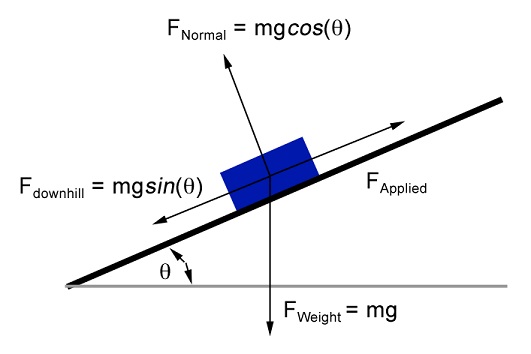An object with a mass of #10 kg# is on a plane with an incline of # - pi/4 #. If it takes #12 N# to start pushing the object down the plane and #4 N# to keep pushing it, what are the coefficients of static and kinetic friction?
1 Answer
The static coefficient is 1.17; the kinetic coefficient is 1.06.
Explanation:
The object on an incline has one component of the force of gravity pulling it down the slope, usually referred to as
![http://thecraftycanvas.com/library/online-learning-tools/physics-homework-helpers/incline-force-calculator-problem-solver/]!
In this problem, the applied force also acts down the incline, and only friction acts up the ramp to oppose these two forces.
The force of friction is given by
Therefore the free body equation is
Since there is no acceleration,
Inserting what we know, I will find
Since
The calculation of

